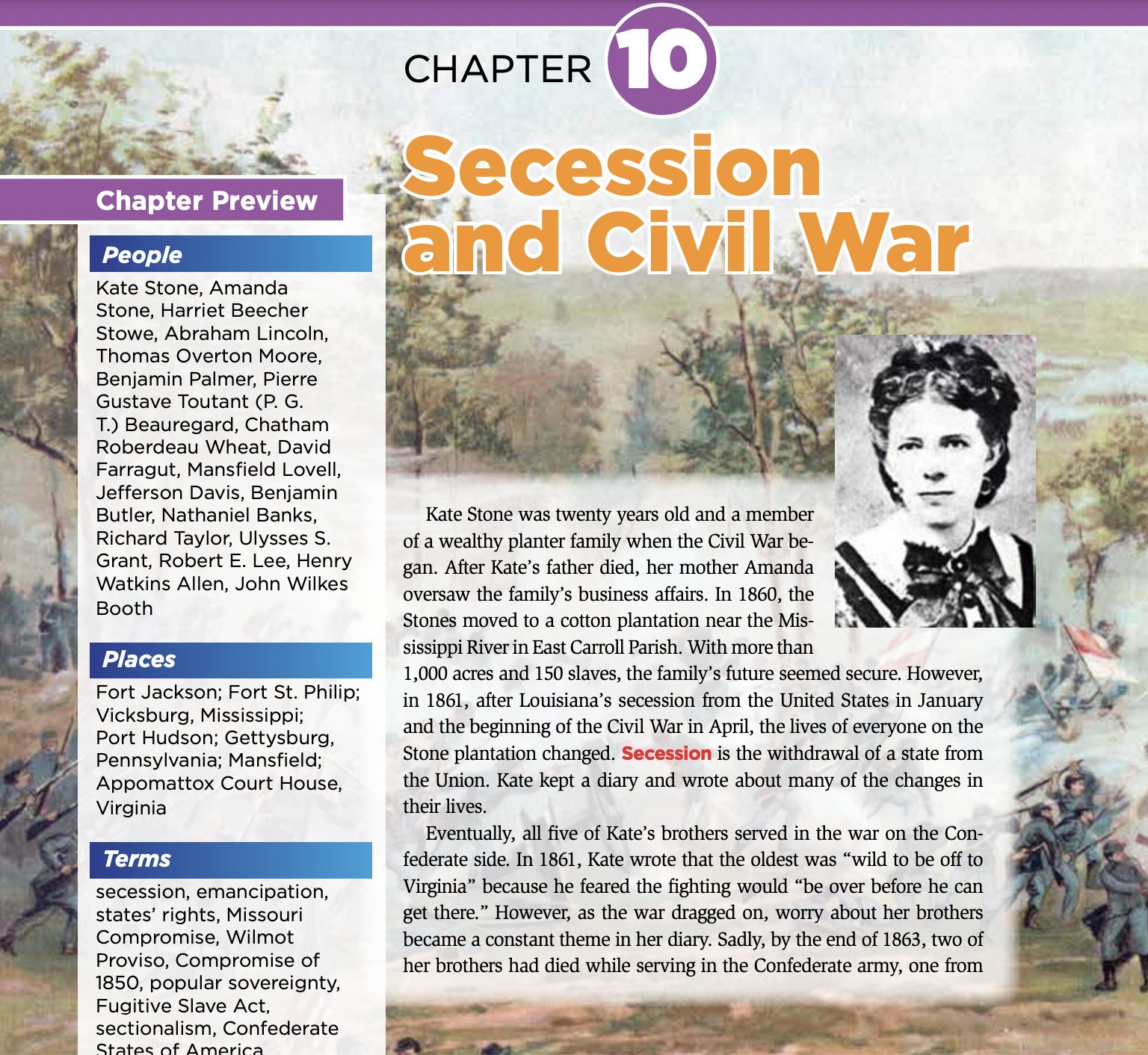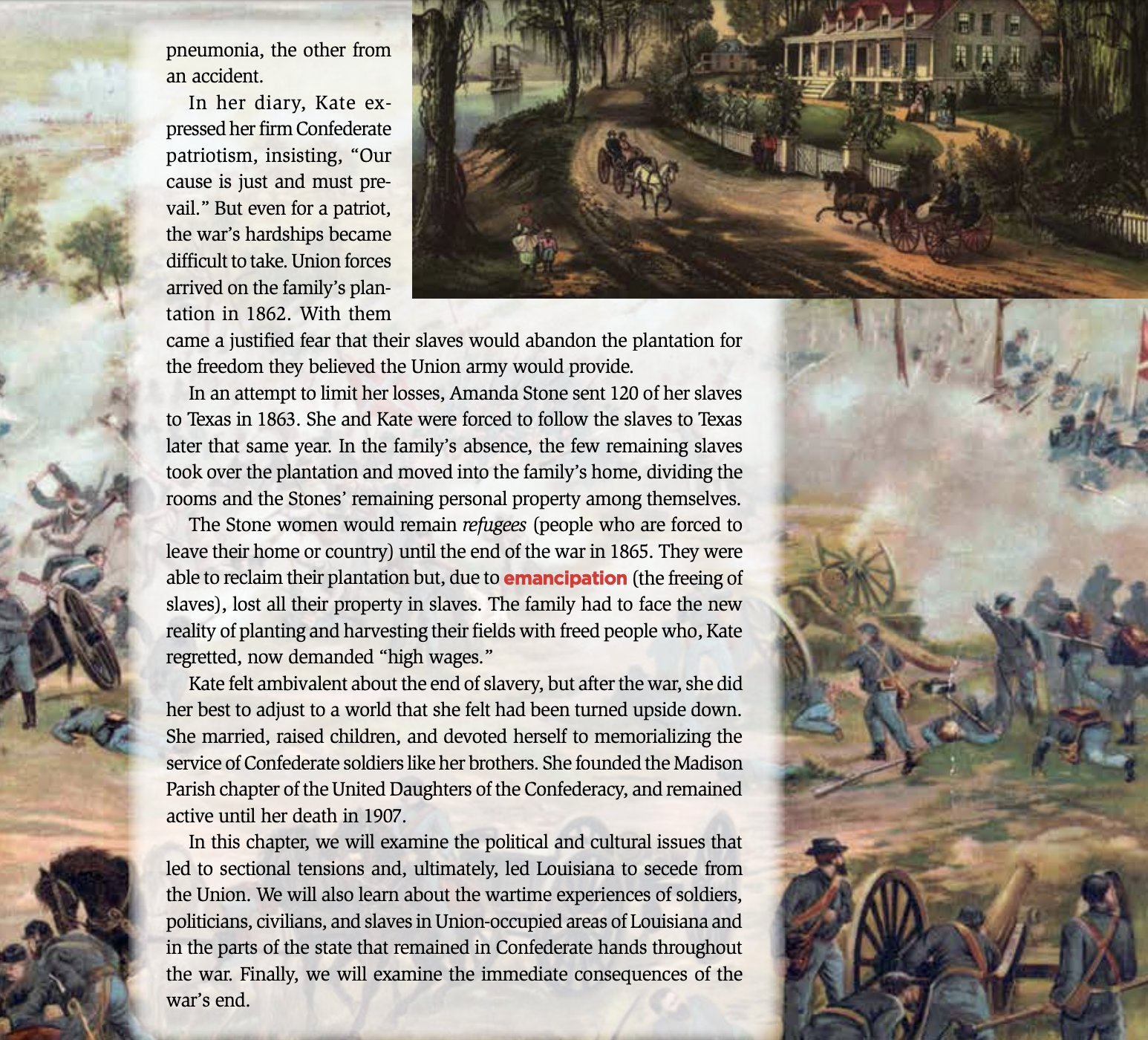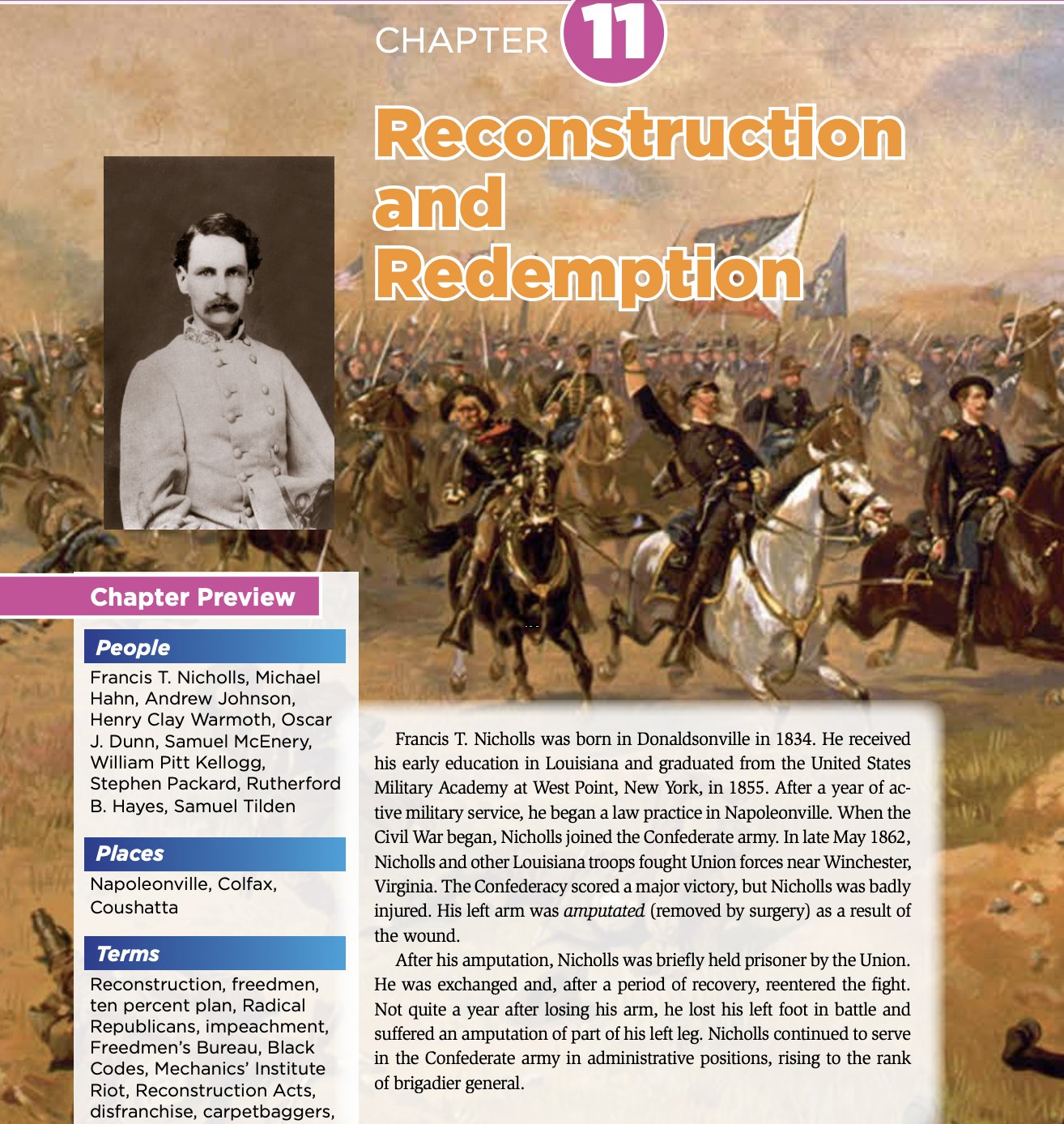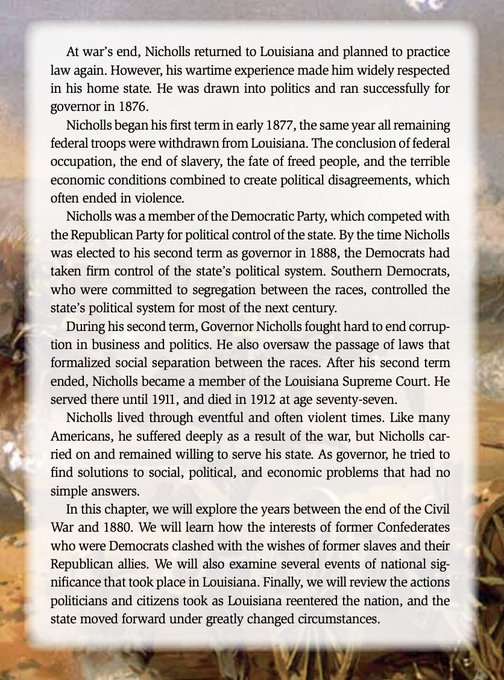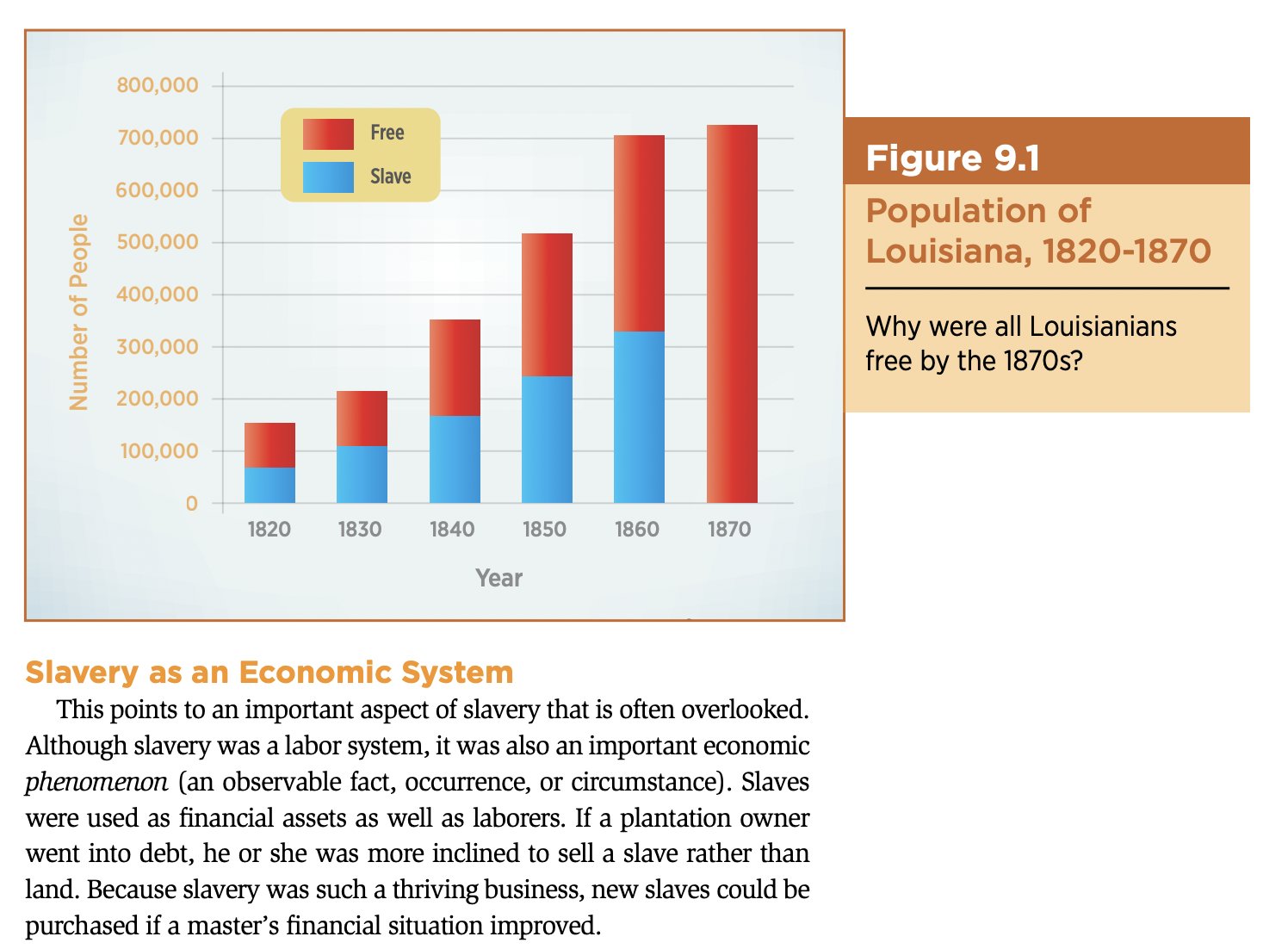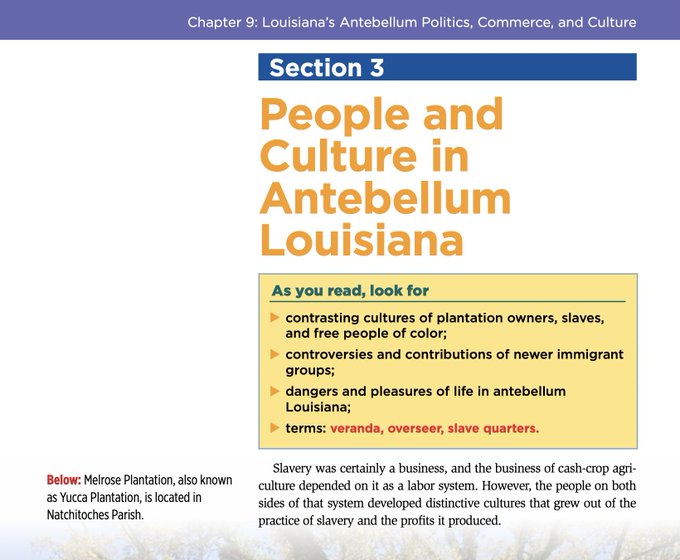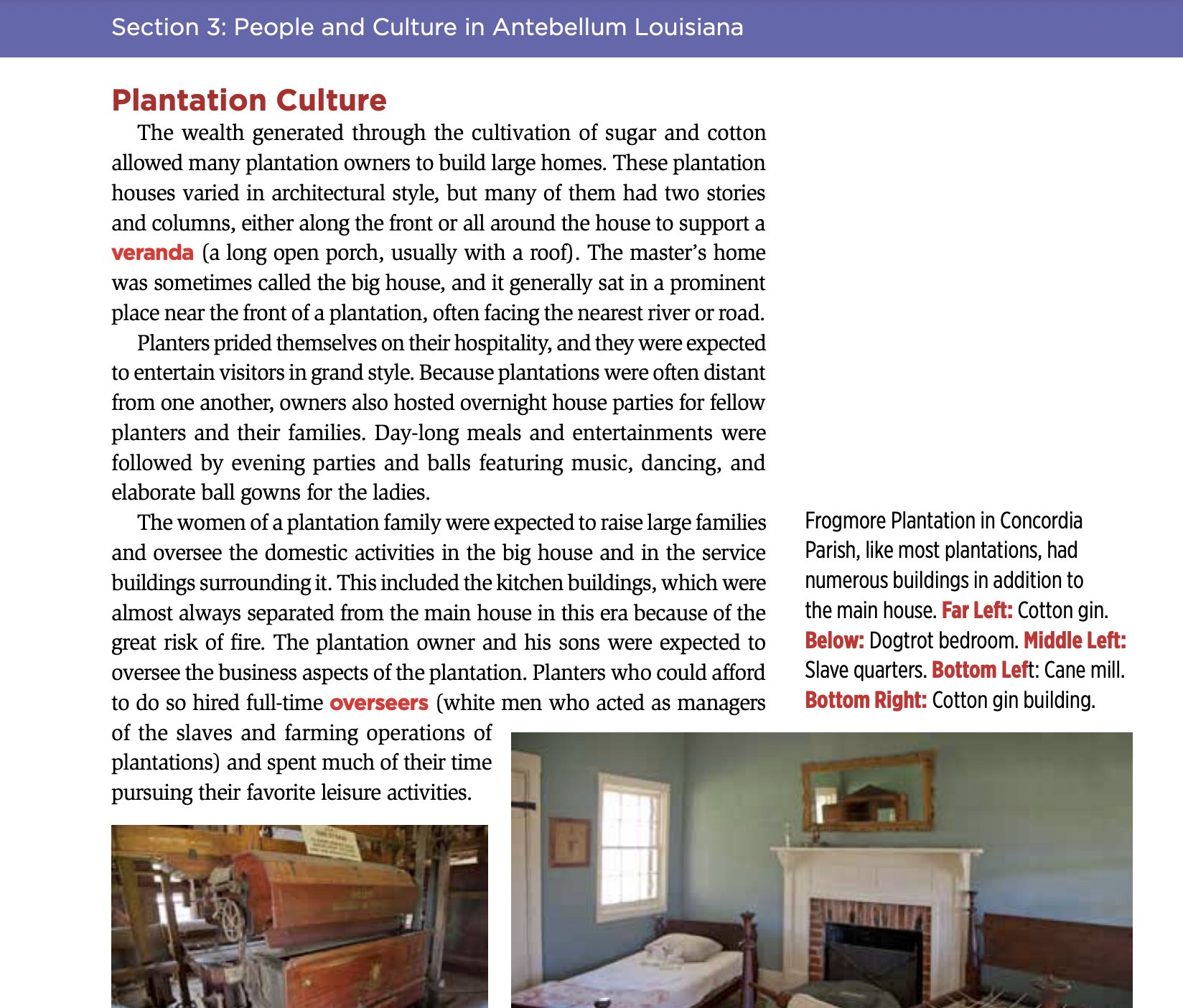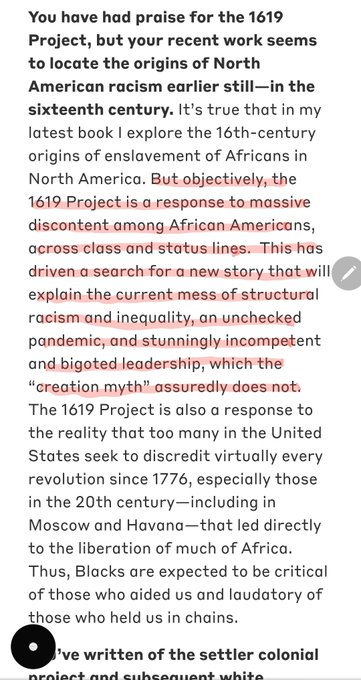You are using an out of date browser. It may not display this or other websites correctly.
You should upgrade or use an alternative browser.
You should upgrade or use an alternative browser.
Disputed 1619 project was CORRECT, Slavery WAS key to US Revolution; Gerald Horne proved in 2014
- Thread starter ☑︎#VoteDemocrat
- Start date
More options
Who Replied?https://www.washingtonpost.com/outl...eb6cb8-9aae-11ea-a282-386f56d579e6_story.html
‘Union’ tells the origin story of the United States through 19th-century voices
David Blight
Frederick Douglass was one of the 19th-century “standard-bearers” who helped define our conception of U.S. history, writes Colin Woodard. (Salwan Georges/The Washington Post)
Frederick Douglass was one of the 19th-century “standard-bearers” who helped define our conception of U.S. history, writes Colin Woodard. (Salwan Georges/The Washington Post)

(Viking)
Woodard succeeds in demonstrating the high stakes of master narratives, versions of the past that people choose as identities and stories in which they wish to live. National histories take countries to war, build and destroy empires, enslave and liberate people. This book will help readers grasp the staying power and the consequences of the idea — ingrained in generations — that American history is essentially a chronicle of progress, a saga of liberty unfolding under some illusive pattern of exceptionalism and divine design. This story has, of course, smashed full-on into several racial, political and economic reckonings that defy its very meaning. Indeed, we are now in the midst of one of those reckonings fundamentally challenging how we tell our national story.
Through five major American writers and public figures, Woodard traces the emergence of the competing visions of U.S. history. He calls his choices the “standard-bearers” and “lightning rods” in a contest to capture the historical imagination of millions of Americans. They include George Bancroft (1800-1891), a son of New England Puritanism, spokesman of profound Yankee certainty, Harvard-educated and nurtured, who became a well-traveled, highly productive popular historian (he wrote 10 volumes of his “History”) of a nation and an Anglo-Saxon race chosen for a destiny of progress and greatness. Bancroft read widely in several languages, and met and conversed with nearly every intellectual and political leader in the Euro-American world, but his “research” in many libraries always sought the patterns of a predetermined outcome — “God’s plan” for a favored American nation in the making.
William Gilmore Simms (1806-1870), the second leading light, born the son of a Charleston, S.C., tavern owner, although quickly orphaned, would become the Old South’s most prolific poet and novelist, a man of letters in a region lacking that tradition, and in time a fierce defender of slavery, states’ rights and the ill-fated Confederacy. Simms became a rival of Bancroft’s, sought literary fame in New York but returned to his beloved Deep South to defend and continually rewrite its story of racial and cultural distinctiveness as it collapsed in defeat.
Woodard’s third figure, and in some ways his wild-card hero, is former slave Frederick Douglass (1818-1895), who spent his first 20 years on Maryland’s Eastern Shore and in Baltimore, and went on to write three classic autobiographies and thousands of abolitionist speeches and editorials. Douglass became the prose poet of an egalitarian American democracy in the era of the Civil War and gives Woodard a voice of an open, pluralistic nation, refounded and reimagined during Reconstruction. Douglass shared some elements of Bancroft’s providentialism about the nature of history but none of the New Englander’s beliefs in racial destiny. With Simms, Douglass shared nothing except a keen interest in slavery’s place in human affairs and fiercely opposite conceptions of why the American republic was fated to fall.
The final two characters in this drama are both academics of a sort, although one became president of the United States. Woodrow Wilson (1856-1924), a child of Presbyterianism, the pride and prejudices of the Deep South, the Civil War and Reconstruction, became by a stumbling path a political theorist, a historian, the president of Princeton University and, at least at first, a remarkably successful rhetorician and politician. Wilson’s white-supremacist and deeply Anglophilic vision of America and its past did not come from libraries; they came from experience, associations and the foundational belief that the races of people had fixed capacities, never fully to be altered. Given his prominence, and as leader of the American crusade for democracy in World War I, Wilson is Woodard’s misguided villain, a privileged voice who could never square his vision of internationalism with his racism.
Frederick Jackson Turner (1861-1932), a Midwestern son of Portage, Wis., and a historian trained in the first American graduate seminar based on the German “scientific” model at Johns Hopkins University, rose to fame largely because of a famous paper on “The Significance of the Frontier in American History,” delivered at the Chicago World’s Fair in 1893. He went on to write many essays and one book that made Americans see their history as movement across geography, by regions and sections, and by the imagination forged in and by the West. A friend of Wilson’s, although no philosopher of race, Turner’s saga is in Woodard’s telling a tragic one of a perfectionist in search of the next source, but who could never produce the big book. Although his name is forever associated with the professionalization of history and with big interpretations, he is rarely read today, despite his extraordinary fame in his lifetime.
Woodard devotes a great deal of space to developing the fascinating biographies of each of these men in short, snappy chapters that shift back and forth between all manner of confluences and coincidences, some useful and some not. We get to know them, their habits, temperaments and health crises. Bancroft dined with Hegel, met Lord Byron, knew all the presidents and brokered his way into Democratic politics as he became a kind of unofficial national historian of a triumphant story, no matter how high the body counts at Antietam. His youthful backpack hikes across Europe are stunning.
Simms fashioned the story of a nation — the slaveholding South — where the enslaved were loyal to their virtuous masters, where race determined human nature. He experienced many tragedies in his family life and mental depressions, but his proslavery ideology formed, as for so many white Southerners, a complete worldview untrammeled by doubt.
Through extensive use of block quotes from some of his major speeches, we see Douglass’s vision of a re-created second American republic that could achieve its destiny as a “composite nation” of all races and religions. We also can feel his sense of irony about American hypocrisy and his sheer mastery of language, although Woodard chops up the great Fourth of July speech of 1852 in simplistic ways. It is also not clear why Woodard uses the names “Freddy,” “Fred” and, finally, “Frederick” in the course of the former slave’s coming of age. Those were not Douglass’s labels for himself. A message embedded in the book, though, is that Wilson and Turner hardly seemed to know that Douglass had existed.
Woodard does make visions of history into a kind of human drama. He writes with a storyteller’s pace and vividness. Indeed, the idea of the American mind is back in historical thinking. The saga of how deeply connected Wilson was to Thomas Dixon’s and D.W. Griffith’s massively popular white-supremacist film, “The Birth of a Nation,” will be a revelation to many readers who may still see the first Southern-born president since the Civil War only as a foreign policy visionary. Turner came to advocate a “melting pot” vision of America and gave lots of public lectures, but he died surrounded by his books and staring into his notes, still trying to explain America to himself.
Woodard has read deeply into each of his figures; the book is drawn largely from many published biographies and collections of letters and speeches. It could also prompt a parlor game to suggest other voices of American narratives and nationalism he might have chosen (Mark Twain, Abraham Lincoln, William James, Elizabeth Cady Stanton, W.E.B. Du Bois?). But the subtext for this book, like so much else these days, is Woodard’s fear that the 19th-century belief in an American ethno-state (meaning white) not only survived into our own time but is reascendant in Trumpism’s assault on “liberal civic nationalism.” As Woodard warns, only fools or the ignorant will think this battle will ever really end, even when President Trump and his own profane myth are banished.
The Struggle to Forge the Story of United States Nationhood
‘Union’ tells the origin story of the United States through 19th-century voices
David Blight
Frederick Douglass was one of the 19th-century “standard-bearers” who helped define our conception of U.S. history, writes Colin Woodard. (Salwan Georges/The Washington Post)
Frederick Douglass was one of the 19th-century “standard-bearers” who helped define our conception of U.S. history, writes Colin Woodard. (Salwan Georges/The Washington Post)

(Viking)
Woodard succeeds in demonstrating the high stakes of master narratives, versions of the past that people choose as identities and stories in which they wish to live. National histories take countries to war, build and destroy empires, enslave and liberate people. This book will help readers grasp the staying power and the consequences of the idea — ingrained in generations — that American history is essentially a chronicle of progress, a saga of liberty unfolding under some illusive pattern of exceptionalism and divine design. This story has, of course, smashed full-on into several racial, political and economic reckonings that defy its very meaning. Indeed, we are now in the midst of one of those reckonings fundamentally challenging how we tell our national story.
Through five major American writers and public figures, Woodard traces the emergence of the competing visions of U.S. history. He calls his choices the “standard-bearers” and “lightning rods” in a contest to capture the historical imagination of millions of Americans. They include George Bancroft (1800-1891), a son of New England Puritanism, spokesman of profound Yankee certainty, Harvard-educated and nurtured, who became a well-traveled, highly productive popular historian (he wrote 10 volumes of his “History”) of a nation and an Anglo-Saxon race chosen for a destiny of progress and greatness. Bancroft read widely in several languages, and met and conversed with nearly every intellectual and political leader in the Euro-American world, but his “research” in many libraries always sought the patterns of a predetermined outcome — “God’s plan” for a favored American nation in the making.
William Gilmore Simms (1806-1870), the second leading light, born the son of a Charleston, S.C., tavern owner, although quickly orphaned, would become the Old South’s most prolific poet and novelist, a man of letters in a region lacking that tradition, and in time a fierce defender of slavery, states’ rights and the ill-fated Confederacy. Simms became a rival of Bancroft’s, sought literary fame in New York but returned to his beloved Deep South to defend and continually rewrite its story of racial and cultural distinctiveness as it collapsed in defeat.
Woodard’s third figure, and in some ways his wild-card hero, is former slave Frederick Douglass (1818-1895), who spent his first 20 years on Maryland’s Eastern Shore and in Baltimore, and went on to write three classic autobiographies and thousands of abolitionist speeches and editorials. Douglass became the prose poet of an egalitarian American democracy in the era of the Civil War and gives Woodard a voice of an open, pluralistic nation, refounded and reimagined during Reconstruction. Douglass shared some elements of Bancroft’s providentialism about the nature of history but none of the New Englander’s beliefs in racial destiny. With Simms, Douglass shared nothing except a keen interest in slavery’s place in human affairs and fiercely opposite conceptions of why the American republic was fated to fall.
The final two characters in this drama are both academics of a sort, although one became president of the United States. Woodrow Wilson (1856-1924), a child of Presbyterianism, the pride and prejudices of the Deep South, the Civil War and Reconstruction, became by a stumbling path a political theorist, a historian, the president of Princeton University and, at least at first, a remarkably successful rhetorician and politician. Wilson’s white-supremacist and deeply Anglophilic vision of America and its past did not come from libraries; they came from experience, associations and the foundational belief that the races of people had fixed capacities, never fully to be altered. Given his prominence, and as leader of the American crusade for democracy in World War I, Wilson is Woodard’s misguided villain, a privileged voice who could never square his vision of internationalism with his racism.
Frederick Jackson Turner (1861-1932), a Midwestern son of Portage, Wis., and a historian trained in the first American graduate seminar based on the German “scientific” model at Johns Hopkins University, rose to fame largely because of a famous paper on “The Significance of the Frontier in American History,” delivered at the Chicago World’s Fair in 1893. He went on to write many essays and one book that made Americans see their history as movement across geography, by regions and sections, and by the imagination forged in and by the West. A friend of Wilson’s, although no philosopher of race, Turner’s saga is in Woodard’s telling a tragic one of a perfectionist in search of the next source, but who could never produce the big book. Although his name is forever associated with the professionalization of history and with big interpretations, he is rarely read today, despite his extraordinary fame in his lifetime.
Woodard devotes a great deal of space to developing the fascinating biographies of each of these men in short, snappy chapters that shift back and forth between all manner of confluences and coincidences, some useful and some not. We get to know them, their habits, temperaments and health crises. Bancroft dined with Hegel, met Lord Byron, knew all the presidents and brokered his way into Democratic politics as he became a kind of unofficial national historian of a triumphant story, no matter how high the body counts at Antietam. His youthful backpack hikes across Europe are stunning.
Simms fashioned the story of a nation — the slaveholding South — where the enslaved were loyal to their virtuous masters, where race determined human nature. He experienced many tragedies in his family life and mental depressions, but his proslavery ideology formed, as for so many white Southerners, a complete worldview untrammeled by doubt.
Through extensive use of block quotes from some of his major speeches, we see Douglass’s vision of a re-created second American republic that could achieve its destiny as a “composite nation” of all races and religions. We also can feel his sense of irony about American hypocrisy and his sheer mastery of language, although Woodard chops up the great Fourth of July speech of 1852 in simplistic ways. It is also not clear why Woodard uses the names “Freddy,” “Fred” and, finally, “Frederick” in the course of the former slave’s coming of age. Those were not Douglass’s labels for himself. A message embedded in the book, though, is that Wilson and Turner hardly seemed to know that Douglass had existed.
Woodard does make visions of history into a kind of human drama. He writes with a storyteller’s pace and vividness. Indeed, the idea of the American mind is back in historical thinking. The saga of how deeply connected Wilson was to Thomas Dixon’s and D.W. Griffith’s massively popular white-supremacist film, “The Birth of a Nation,” will be a revelation to many readers who may still see the first Southern-born president since the Civil War only as a foreign policy visionary. Turner came to advocate a “melting pot” vision of America and gave lots of public lectures, but he died surrounded by his books and staring into his notes, still trying to explain America to himself.
Woodard has read deeply into each of his figures; the book is drawn largely from many published biographies and collections of letters and speeches. It could also prompt a parlor game to suggest other voices of American narratives and nationalism he might have chosen (Mark Twain, Abraham Lincoln, William James, Elizabeth Cady Stanton, W.E.B. Du Bois?). But the subtext for this book, like so much else these days, is Woodard’s fear that the 19th-century belief in an American ethno-state (meaning white) not only survived into our own time but is reascendant in Trumpism’s assault on “liberal civic nationalism.” As Woodard warns, only fools or the ignorant will think this battle will ever really end, even when President Trump and his own profane myth are banished.
The Struggle to Forge the Story of United States Nationhood

#BothSides

Cotton, McConnell, Colleagues Introduce Bill to Defund 1619 Project Curriculum | U.S. Senator Cotton of Arkansas
COTTON, MCCONNELL, COLLEAGUES INTRODUCE BILL TO DEFUND 1619 PROJECT CURRICULUM
FOR IMMEDIATE RELEASE
Contact: James Arnold or Mary Collins Atkinson (202) 224-2353
June 14, 2021
Cotton, McConnell, Colleagues Introduce Bill to Defund 1619 Project Curriculum
Washington, D.C. — Senators Tom Cotton (R-Arkansas), John Boozman (R-Arkansas), Marsha Blackburn (R-Tennessee), Cynthia Lummis (R-Wyoming), Thom Tillis (R-North Carolina), Tommy Tuberville (R-Alabama), and Republican Leader Mitch McConnell (R-Kentucky) reintroduced the Saving American History Act, legislation to prohibit the use of federal funds to teach the 1619 Project by K-12 schools or school districts. Schools that teach the 1619 Project would also be ineligible for federal professional-development grants. Bill text may be found here.
Representatives Ken Buck (R-Colorado) and Rick Allen (R-Georgia) introduced companion legislation in the House of Representatives.
“Activists in schools want to teach our kids to hate America and hate each other using discredited, Critical Race Theory curricula like the 1619 Project. Federal funds should not pay for activists to masquerade as teachers and indoctrinate our youth,” said Cotton.
“High-quality civics education is vital to the health of our democracy,” said McConnell. “Debunked activist propaganda that seeks to divide has no place in American classrooms and no right to taxpayer funding. I’m proud to join in sponsoring this legislation on behalf of our youngest citizens and generations yet to come.”
“The heart of the 1619 Project’s central claim and key parts of its framework have been disputed by respected scholars and historians, and rightfully so. It has no business in our classrooms in Arkansas and across the country. This misguided and academically suspect curriculum represents the exact opposite of what we should be encouraging educators to instruct and promote – accurate and contextual understanding of our past along with the importance of civic engagement, cooperation and the significance of the shared values that set our country apart and above,” said Boozman.
“American schools should be a place for education—not indoctrination,” said Blackburn. “The 1619 Project is based on false narrative and stack of lies about our country. This state sponsored anti-American propaganda must be kept out of the classroom. The Saving American History Act ensures that taxpayer funding will not subsidize the brainwashing of our nation’s future.”
“The 1619 Project and Critical Race Theory are efforts to rewrite the history of our country, ignoring the many things that have made America great. I’m proud to work with my colleague Tom Cotton to keep taxpayer dollars from funding this,” said Lummis.
“I have significant concerns with the Department of Education’s recent effort to reorient the bipartisan American History and Civics Education programs away from their intended purposes towards a politicized and divisive agenda,” said Tillis. “Americans do not want their tax dollars going towards promoting radical ideologies meant to divide us instead of being used to promote the principles that unite our nation. Our students deserve a rigorous understanding of civics and American history, to understand both our successes and failures as a nation. I do not support diverting tax-payer resources towards promoting ideological and misleading depictions of our Nation’s history and I am proud to work on this important legislation with my colleagues to address this issue.”
“When done right, education is the key to freedom. By expediting the use of the 1619 Project, our schools are coming perilously close to cementing existing inequality, rather than giving kids the chance to escape it. The U.S. government should not spend a single taxpayer dollar to teach children to dislike their country. I’m proud to cosponsor this legislation so that our schools can encourage the open debate of ideas and teach important morals to our students,” said Tuberville.
“Critical Race Theory is dangerous, anti-American, and has no place in our nation’s schools. School curriculum plays a critical role in a child’s development and greatly influences the type of adult they will become. Children shouldn’t be taught that they will be treated differently or will be racist because of their skin color,” said Buck.
“The 1619 Project aims to indoctrinate our students into believing that America is an evil country, and there is no room for that in our classrooms. We must teach our young folks to learn from our nation’s past in order to form a more perfect union. Teaching revisionist history and promoting divisive ideology will not move our nation forward. This legislation will ensure federal dollars are used to provide our children with historically accurate curriculum,” said Allen.
“Teaching the 1619 Project in public schools is state-funded racism, plain and simple,” said Texas Public Policy Foundation Distinguished Senior Fellow Thomas Lindsay. “It is a fiction-based attempt at revisionist history intended to indoctrinate future generations with radical left-wing propaganda. We strongly support Sen. Cotton’s effort to protect students from this thoroughly debunked narrative, as well as ensuring taxpayers aren’t paying the bill for it. Schools should be teaching a complete and honest history of America’s founding — failures, triumphs, and all — based on the true principles that made our country a beacon of freedom throughout the world.”
Background:
- Senator Cotton first introduced the Saving American History Act in July of 2020.
- The 1619 Project is a revisionist history project of the New York Times widely criticized by historians.
- Despite major criticism of the project, schools around the country have begun incorporating the 1619 Project into their curricula. So far, schools or school districts in Chicago; Newark, N.J.; Buffalo, N.Y., and Washington, D.C. have all reportedly announced 1619 Project-related programs.
Last edited:
havoc
Superstar
ADOS ancestors that joined the British army were kicking the Continental Army ass
 13th colony crackers had slave fought their battle while they sit on the sidelines taking all the credit for the American Revolution.
13th colony crackers had slave fought their battle while they sit on the sidelines taking all the credit for the American Revolution.  I learn something new everyday.
I learn something new everyday.YEPADOS ancestors that joined the British army were kicking the Continental Army ass13th colony crackers had slave fought their battle while they sit on the sidelines taking all the credit for the American Revolution.
I learn something new everyday.
She's STANDING on this shyt.
I LOVE IT!
@88m3 @ADevilYouKhow @wire28 @dtownreppin214
@dza @wire28 @BigMoneyGrip @Dameon Farrow @re'up @Blackfyre @NY's #1 Draft Pick @Skyfall @2Quik4UHoes
I LOVE IT!
@88m3 @ADevilYouKhow @wire28 @dtownreppin214
@dza @wire28 @BigMoneyGrip @Dameon Farrow @re'up @Blackfyre @NY's #1 Draft Pick @Skyfall @2Quik4UHoes
Slave Nation: How Slavery United the Colonies & Sparked the American Revolution
Book – Non-fiction. By Alfred Blumrosen and Ruth Blumrosen. 2006.
A detailed account of the role slavery played in the Revolutionary War and the writing of the U.S. Constitution.
Themes: Economics, Slavery and Resistance
Print
Order online
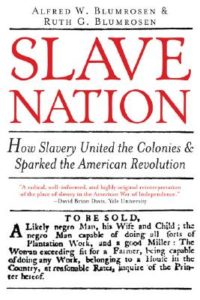 This carefully documented, chilling history presents a radically different view of the profound role that slavery played in the founding of the republic, from the Declaration of Independence and the American Revolution through the creation of the Constitution. The book begins with a novel explanation about the impact of the Somerset Case on the founding of the republic.
This carefully documented, chilling history presents a radically different view of the profound role that slavery played in the founding of the republic, from the Declaration of Independence and the American Revolution through the creation of the Constitution. The book begins with a novel explanation about the impact of the Somerset Case on the founding of the republic.
In 1772, a judge sitting in the High Court in London declared slavery “so odious” that it could not exist at common law and set the conditions which would consequently result in the freedom of the 15,000 slaves living in England. This decision eventually reached America and terrified slaveholders in the collection of British colonies, subject to British law. The predominantly southern slave-owners feared that this decision would cause the emancipation of their slaves. It did result in some slaves freeing themselves.
To ensure the preservation of slavery, the southern colonies joined the northerners in their fight for “freedom” and their rebellion against England. In 1774, at the First Continental Congress John Adams promised southern leaders to support their right to maintain slavery. As Eleanor Holmes Norton explains in her introduction, “The price of freedom from England was bondage for African slaves in America. America would be a slave nation.”
Thomas Jefferson relied on this understanding when carefully crafting the stirring words of the Declaration of Independence. In 1787, about the time Benjamin Franklin proposed the first affirmative action plan, negotiations over a new Constitution ground to a halt until the southern states agreed to allow the prohibition of slavery north of the Ohio River. The resulting Northwest Ordinance created the largest slave-free area in the world. Slave Nation is a fascinating account of the role slavery played in the foundations of the United States that traces this process of negotiation through the adoption of Northwest Ordinance in 1787, and informs our understanding of later events including the Civil War and the Civil Rights Act of 1964. [Publisher’s description.]
Features an introduction by Congresswoman Eleanor Holmes Norton, and an in requiem poem by Barbara Chase-Riboud.
About the Authors
Alfred Blumrosen is the Thomas A. Cowan Professor of Law Emeritus at Rutgers University in New Jersey, specializing in Labor and Employment law, with a long history in enforcement of Civil Rights.
The late Ruth Blumrosen was an adjunct professor of Law at Rutgers Law School, who did groundbreaking work on equality of the sexes, especially in connection with wages.
ISBN: 9781402206979 | Published by Sourcebooks | Website for the book.
Book – Non-fiction. By Alfred Blumrosen and Ruth Blumrosen. 2006.
A detailed account of the role slavery played in the Revolutionary War and the writing of the U.S. Constitution.
- Click to email this to a friend (Opens in new window)
- 4Click to share on Pinterest (Opens in new window)4
- Click to share on Twitter (Opens in new window)
- Click to share on Facebook (Opens in new window)
Themes: Economics, Slavery and Resistance
Order online
 This carefully documented, chilling history presents a radically different view of the profound role that slavery played in the founding of the republic, from the Declaration of Independence and the American Revolution through the creation of the Constitution. The book begins with a novel explanation about the impact of the Somerset Case on the founding of the republic.
This carefully documented, chilling history presents a radically different view of the profound role that slavery played in the founding of the republic, from the Declaration of Independence and the American Revolution through the creation of the Constitution. The book begins with a novel explanation about the impact of the Somerset Case on the founding of the republic.In 1772, a judge sitting in the High Court in London declared slavery “so odious” that it could not exist at common law and set the conditions which would consequently result in the freedom of the 15,000 slaves living in England. This decision eventually reached America and terrified slaveholders in the collection of British colonies, subject to British law. The predominantly southern slave-owners feared that this decision would cause the emancipation of their slaves. It did result in some slaves freeing themselves.
To ensure the preservation of slavery, the southern colonies joined the northerners in their fight for “freedom” and their rebellion against England. In 1774, at the First Continental Congress John Adams promised southern leaders to support their right to maintain slavery. As Eleanor Holmes Norton explains in her introduction, “The price of freedom from England was bondage for African slaves in America. America would be a slave nation.”
Thomas Jefferson relied on this understanding when carefully crafting the stirring words of the Declaration of Independence. In 1787, about the time Benjamin Franklin proposed the first affirmative action plan, negotiations over a new Constitution ground to a halt until the southern states agreed to allow the prohibition of slavery north of the Ohio River. The resulting Northwest Ordinance created the largest slave-free area in the world. Slave Nation is a fascinating account of the role slavery played in the foundations of the United States that traces this process of negotiation through the adoption of Northwest Ordinance in 1787, and informs our understanding of later events including the Civil War and the Civil Rights Act of 1964. [Publisher’s description.]
Features an introduction by Congresswoman Eleanor Holmes Norton, and an in requiem poem by Barbara Chase-Riboud.
About the Authors
Alfred Blumrosen is the Thomas A. Cowan Professor of Law Emeritus at Rutgers University in New Jersey, specializing in Labor and Employment law, with a long history in enforcement of Civil Rights.
The late Ruth Blumrosen was an adjunct professor of Law at Rutgers Law School, who did groundbreaking work on equality of the sexes, especially in connection with wages.
ISBN: 9781402206979 | Published by Sourcebooks | Website for the book.



